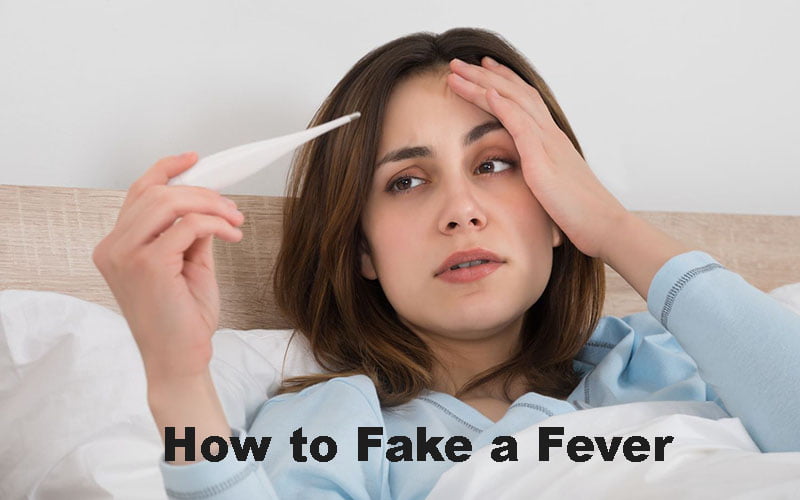
Faking a fever might seem like a questionable idea, but there are situations where it can be necessary or beneficial. Whether you’re looking to get a day off from school or work, trying to avoid a social event, or just need some rest and relaxation, knowing how to convincingly fake a fever can come in handy. In this comprehensive guide, we will explore various methods and techniques to simulate fever symptoms while avoiding detection. We’ll also provide insights based on personal experiences and credible sources to ensure you have all the information you need to successfully pull off this act.
Simulating a fever naturally is essential to avoid arousing suspicion. Here are some effective and safe methods to mimic fever symptoms without resorting to harmful substances.
Ensure you dress warmly and keep yourself in a heated environment. Use blankets to create the illusion of an elevated body temperature. By doing so, you’ll feel warm to the touch, giving the impression of a fever.
Use warm water to lightly moisten your face, then rub it gently with a towel to create a flushed appearance. A reddened face is a classic fever symptom, and this simple technique can make you appear convincingly unwell.
When interacting with others, avoid making direct eye contact. People with a fever often feel fatigued and lethargic, and this behavior will add to the illusion.
A persistent cough is another common symptom of a fever. Practice a cough that sounds genuine but isn’t too exaggerated. Coughing occasionally will help maintain the facade without overdoing it.
Touch your forehead with warm hands periodically to create the impression of fever-induced warmth. However, make sure it’s not too hot to avoid suspicion.
Move slowly and exhibit signs of weakness and fatigue. Sluggish movements and a tired demeanor will further enhance the belief that you are unwell.
Props can be excellent tools to enhance your act and make it more believable. Here are some ideas for using props to fake a fever.
Invest in a non-contact infrared thermometer to regularly check your “fever” throughout the day. Before someone sees the result, discreetly heat the thermometer under a lamp or with warm water to give the appearance of a high temperature.
Place a heating pad on your forehead or under your armpits to create the sensation of warmth associated with a fever. This will provide tangible evidence of your supposed ailment.
Keep warm water bottles nearby and hug them when others are around. This will increase your body heat, contributing to the appearance of a fever.
Display empty medicine bottles labeled with common fever-reducing medication. This will reinforce the illusion that you are indeed unwell and seeking relief.
A: Faking a fever using natural methods and props is generally safe as long as you don’t overdo it. Avoid using harmful substances or extreme measures that could jeopardize your health.
A: To avoid suspicion, stay consistent with your symptoms, avoid exaggeration, and act convincingly unwell. Keep a low profile and don’t draw unnecessary attention to yourself.
A: Maintaining the act of having a fever depends on your acting skills and the environment you’re in. Generally, it’s best to limit the act to a day or two to avoid arousing suspicion.
A: It’s generally best to keep your act a secret. Revealing that you faked a fever may lead to distrust or skepticism in the future.
A: Faking a fever using harmless methods is low risk. However, if you employ dangerous substances or go to extreme lengths, it could have adverse consequences.
A: In certain situations, faking a fever to avoid responsibilities or obligations may have legal implications. Be mindful of the consequences and the context in which you fake a fever.
Faking a fever is an art that requires finesse and subtlety. By following the tips and techniques outlined in this guide, you can successfully simulate fever symptoms without raising eyebrows. Remember, moderation and authenticity are key to maintaining believability. Always prioritize safety and avoid taking unnecessary risks when attempting to fake a fever.
Recommended other topics: Theory Wellness: Exploring the Path to Wellbeing










© InfoDoot. All Rights Reserved.